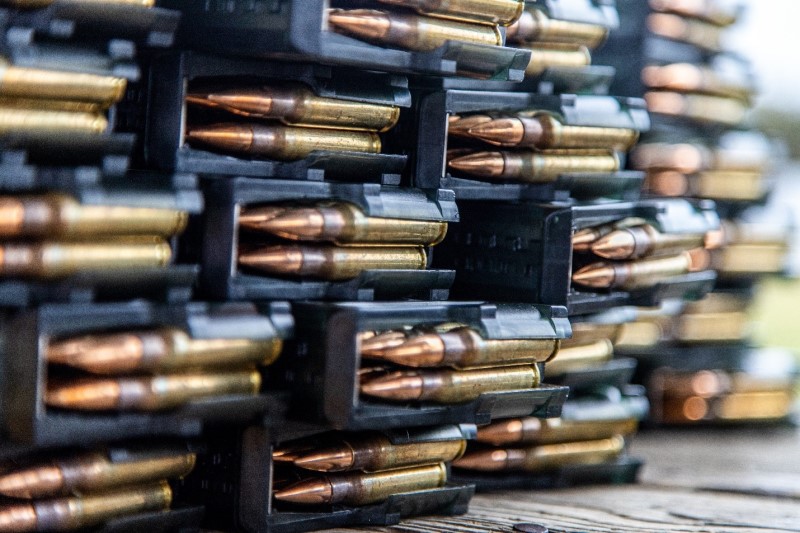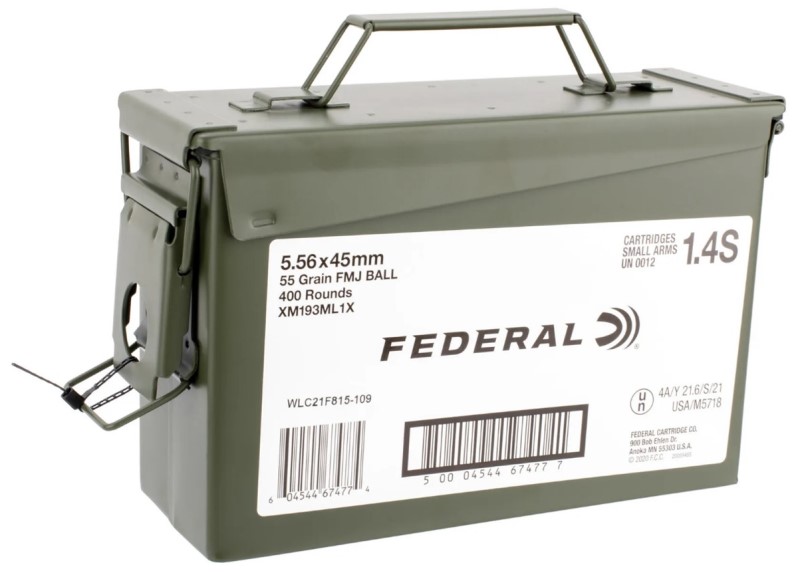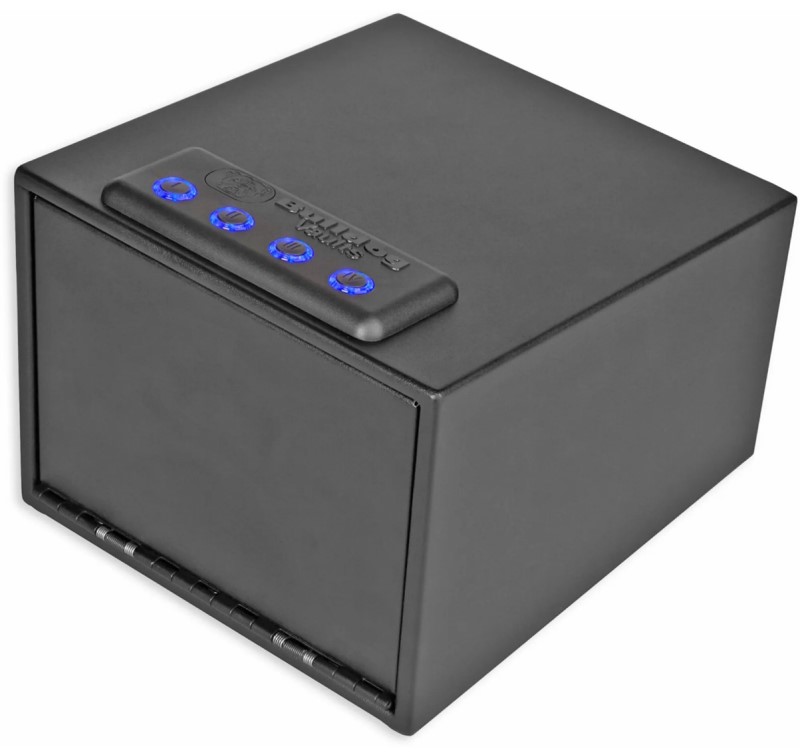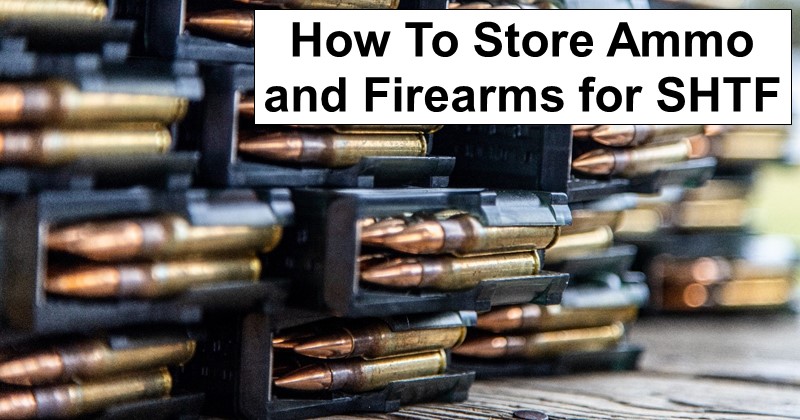
Many firearm enthusiasts have a cabinet or case to store their rifles to protect their AR15s, shotguns, pistols, and rifles from corrosion due to moisture. Just as many choose to leave their firearms in a carry case in the back of their closet that’s not suited to prevent corrosion or rust. As unfortunate as it is, the last thing any gun owner wants to experience is taking a corroded upper receiver or rusted out lower to a local gunsmith to have the rifle’s finish restored.
However, many avid gun owners rarely consider taking the same care of the ammunition that feeds their firearms. One of the most misunderstood myths is how long you can or should store your ammo before use. While most ammo manufacturers suggest a ten-year shelf life, keep in mind that if you utilize proper storage techniques, you can effectively stock your ammunition and protect your firearms when stored for more extended periods. Of course, you have to have ammo to stock first and there are a variety of online gun shops to check out to get your collection going.
Understanding the Problems
Understanding what problems improperly stored firearms and ammunition typically creates is the first step in prevention and will intuitively point you in the right direction to resolve them. Unprotected stored ammunition can weaken the primers in the cartridge resulting in a host of consistent and frustrating misfires. If all you experience is a misfire situation because your ammunition or firearm isn’t stored correctly, consider yourself extremely lucky. Stored in a place where the temperatures fluctuate wildly, the propellant or gun powder may deteriorate and provide erratic or dangerous behavior when fired from a firearm that suffers the same corrosive disorder.
For most firearms, sufficient corrosion can render a pistol or rifle just as dangerous or unusable when the gun is not routinely maintained and stored in a moisture proof environment. The problems created by improperly stored ammunition only get worse over time. These uncontrolled rapid fluctuations in heat and cold weaken the walls of the cartridges, possibly causing them to rupture when fired. Improperly stored ammunition can create oxidization on the outside of the cartridge walls or the trigger components of your rifle or pistol. Ultimately, this can create a dangerous and damaging combination of errors in an unproperly maintained firearm chamber.
How to Store for the Short Term
Now that you understand the problems, you need to examine your shooting habits. There are two trains of thought on ammunition purchases. Some gun enthusiasts don’t keep stockpiles, content to purchase what they intend to fire before their hunting trip or a day at the local range. While you can do this, you will likely suffer a much higher overall cost to feed your habit and, in some cases, experience unavailability of the caliber of ammo you need.
However, if you’re a high-volume shooter, you’ll probably want to stockpile what you need and take advantage of sale prices you may discover. One tip to note about short-term caching. If you intend to stock up for lengths up to around one or two years, consider storing the ammo in the packaged containers from the manufacturer.
Of course, you should consider keeping these boxes inside your house where temperature and humidity won’t affect it that much. There are a few benefits to the short-term storage of ammunition in their packaging. First, the caliber and style are displayed outside the box, leaving little chance of choosing the wrong type of ammunition. However, it’s unusual to consider keeping your firearms in the package they came in, so you’ll need to ensure the gun cabinet you choose is not only moisture-free but perhaps fireproof and can be locked securely.
After purchase, it’s probably a good idea to inscribe the date of purchase on the outside of the ammo box, allowing you to easily determine the length of time the ammo sits in your storage area. It then becomes a simple act of rotating the oldest ammunition and loading your cleaned and lubricated, pistol or rifle with older ammo before heading out on a hunting trip or a day at the range.
Another reason for considering short-term storage in the boxes from the manufacturer is the bullets won’t get banged up to the point that some are unusable when you dump the entire contents in another storage container. Remember that the key here is short-term storage of one or two years. You’ll need to make a few adjustments or additions to your storage space for more extended periods.
Extended Ammo Storage
For stockpiling ammunition for longer than a couple of years, one of the best initial purchases you can make is one or several military-style ammo cans. Finding these canisters won’t be difficult as almost every local outdoor gear shop or firearm retailer will likely have a few kinds of ammunition cans available for purchase.

Keep in mind that these military-style ammo cans were designed to handle extreme heat, torrential rains, dirt, grime, and whirling dust dervishes and keep the ammunition safe, dry, and ready to use. One of the best advantages of these ammo cans is how easy it is to store your ammo in the canisters inside your home instead of exposing them to inclement weather.
When deciding to use military-style ammo cans to store your ammunition, there is something to remember. Always check the rubber seals or gaskets before purchase. These gaskets are the only thing between the perils of moisture and humidity and your ammo. If the gaskets are cracked or slightly eroded, you may as well dump your ammo on the floor of a closet because ammo cans with damaged gaskets will not protect your ammunition any better.
While ammo cans can aid in the long-term storage of your ammunition, you’ll still need a proper case or cabinet to store your rifles or pistols. One of the best cabinets for the money is the Wincent five-rifle cabinet, accommodating up to five various configurations of rifles and an enclosed storage area up top for pistols. The Wincent gun cabinet features digital key access and emergency access keys when speedy access is critical for less than four hundred dollars. A bargain in the making, the gun cabinet from Wincent is also built for easy installation and competitively priced, making it an easy purchasing choice for any firearm owner. It will also provide the perfect environment for your firearms handling the corrosive nature of moisture and humidity and destruction by an accidental fire better than most.
Solving the Basic Storage Issues
While creating a garage storage area with the perfect humidity range may be challenging, you can do a few things inside the home if you’ve got the budget and space. If you’ve picked out the perfect place to store your ammunition and an excellent place for your new gun cabinet for a few dollars at a local hardware store, you can purchase a suitable shelf for all your ammunition cans. Even when storing your ammo inside on shelves, the storage space may need a dehumidifier to maintain precise humidity settings in the area selected.
HOmeLabs offers a fantastic three thousand square foot dehumidifier that’s excellent for use in any cellar, basement, or storage space you pick and wicks sufficient moisture from the air without doing a number on your energy bill. Although priced at around two hundred dollars, think of the thousands of dollars you’ve spent on your rifles, pistols, and ammo stored in the canisters. When factoring in the collective cost of your guns and ammunition, maintaining them properly by including a humidifier is a small investment.
Rules To Store By
There’s one rule that many firearm enthusiasts often break, whether veteran or novice: returning unused ammunition to their stockpile after a trip in the field hunting or at practice day at the range and failing to properly clean your firearm before returning it to your gun case. Once you’ve pulled several rounds of ammo out of stock and exposed them to the extremities of the weather, you should separate them from your inventory or use them as quickly as possible.
Reintroducing compromised ammo into your stock could result in a few unexpected and unpleasant situations. If hunting or trips to the range are infrequent, take some extra time to break down your rifle or pistol and give it proper cleaning and lubrication before placing it back in the gun case. For any gun owner who is considering stockpiling ammunition longer than a couple of years, there are a few additional rules you’ll want to consider. Humidity and moisture collection are not your ammunitions or firearm’s friend. When building an ammunition cache that you intend to keep on hand for several years, you may even want to consider vacuum sealing your ammo. While military-style ammo canisters protect your ammo from caustic temperatures and humidity, there’s nothing wrong with a few extra precautions. Like rotating your stored food and water in your survival prep kits, you should adopt the same practice with your ammunition. Like your foodstuffs, you should consider using the oldest ammo in stock as often as possible. Yes, this rotation method may require you to stock your ammunition stores constantly, but it will ensure the reliability you need when you need it the most.
Check Often to Make Certain
For those who may think storing ammunition in their initial packages inside an ammo can is sufficient protection and focus on vacuum-sealing food instead of ammo, you’ll still need to do one thing. If you’re not a high-volume shooter, you should visibly inspect your ammunition at least twice a year and set up a routine of maintaining and lubricating your rifle and pistols even though they spend more time in the gun cabinet than they do at the range.
The main point here is, that you’ll want to ensure all your ammo is ready to fire and your firearm operates as expected. These visible inspections for corrosion on your ammo or gun are necessary to keep everything intact and ready to go. It should never be a one-and-done event to purchase military-style ammo canisters with brand new gaskets, fill them with your caliber of choice, and stow away your guns once and forget them. Gaskets will fail, and trigger systems in lower receivers can go south as well as the protection of vacuum sealing. Just as you develop a routine of inspecting the use-by date on food or beverages, once created, you should continuously check your inventory of ammo and the operation of your firearms to guarantee effectiveness.
Another thing you may want to do that’s inexpensive and works well is purchasing an ample supply of silica packets and tossing a few into your ammo cans or gun cabinet. These silica gel or desiccant packages are perfect for wicking up any moisture that may have slipped into an ammo can when you open the lid or your gun cabinet when you removed a rifle or pistol for cleaning.
Preventing Dangerous Cookoff
No one wants to consider the possibility of a house fire or the possible situation that a housefire starts to cook off your ammunition stored in ammo cans in that back closet. Still, it can happen, and the results can be dangerous to either your family or first responders.

The sad reality of most military-style ammo cans is that most of them on the market are not fireproof rated. Many gun owners attempt to create their ammunition stocks on a budget and purchase water and moisture proof cans for around ten dollars. However, for a few more dollars, you can buy a waterproof, airtight, and fireproof ammo canister that will potentially negate the accidental cookoff of your ammunition caused by a fire.
The folks at Battery Hookup offer a moisture proof, fireproof ammunition canister in three different sizes for under twenty dollars. Depending on the volume of ammunition you choose to include in your ammo stock, these military surplus ammunition cans are the perfect solutions to prevent harmful and deadly possibilities of a round cookoff caused by a house fire.
Advance Preparedness Is the Key
For those who remember a few years ago, finding ample ammunition stores or the finding a decent firearm was as tricky as picking out a four-leaf clover. Each time new legislation hinted at more stringent gun control, panic-stricken ammunition and gun purchases happened, or the prices skyrocketed so high it required a second house mortgage to purchase either. That was if you were lucky enough to find the right caliber available for the rifle or pistol you decided to buy.
You may be a prepper attempting to stockpile ammunition when the price is right before the market spins crazily out of control. Or maybe you want to prepare for an apocalyptic situation that may or may not happen. Regardless of your reasoning, you’ll want to include building long-term ammunition stocks and performing routine maintenance checks on your firearms as part of your survival tool chest.
[Note: This was a guest post.]

Leave a Reply